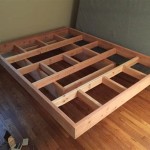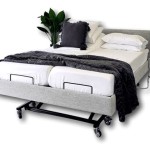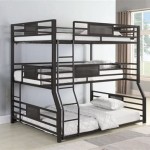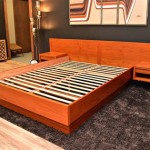How to Make a Frame for a Raised Bed
Raised beds offer numerous benefits for gardening, including improved drainage, soil quality, and accessibility. Whether you are an experienced gardener or a novice, building your own raised bed frame allows you to customize the size, shape, and material to perfectly suit your needs. This article will guide you through the process of constructing a sturdy and long-lasting frame for your raised bed, covering the essential steps and considerations.
1. Planning and Design
Before embarking on the construction process, it's crucial to carefully plan and design your raised bed. This includes determining the dimensions, shape, and location of the bed. Consider factors such as the available space, the types of plants you intend to grow, and the aesthetic appeal you desire.
For instance, a rectangular raised bed is a classic and practical choice for most gardens. However, you can also explore alternative designs like a circular, square, or hexagonal shape to add visual interest. The dimensions of the bed should correspond to the number and size of plants you want to grow. A typical raised bed ranges from 4 to 8 feet in length and 2 to 4 feet in width.
The location is also important. Choose a spot that receives adequate sunlight, has suitable drainage, and is easily accessible for watering and maintenance. Once you have decided on the design, you can start gathering the necessary materials.
2. Choosing Materials
The choice of materials for your raised bed frame depends on your budget, desired aesthetic, and the intended lifespan of the bed. Some common materials include:
Wood: Timber is a versatile and readily available option for raised bed construction. Cedar, redwood, and pressure-treated lumber are known for their durability and resistance to rot and decay. However, wooden frames require regular maintenance, such as staining or painting, to protect them from the elements.
Metal: Steel or aluminum frames offer excellent durability and can withstand harsh weather conditions. They are often lighter than wood and require minimal maintenance. However, they can be more expensive and might require specialized tools for assembly.
Concrete: Concrete blocks can be used to create a permanent and sturdy raised bed frame. They are durable and low-maintenance but can be heavy to handle and require specific tools for installation. Concrete also traps heat, which may affect the soil temperature.
Plastic: Plastic raised bed kits are widely available and offer affordability and ease of assembly. They are lightweight and portable but may have a shorter lifespan than wood or metal frames.
Consider the pros and cons of each material before making a decision. Consult local building codes and regulations to ensure that the selected material meets the requirements for your specific location.
3. Assembling the Frame
Once you have gathered the necessary materials, you can start assembling the frame. The construction process will vary depending on the material chosen.
Wood Frame: For a wooden frame, you will need to cut the lumber to the desired dimensions and join the pieces using screws or nails. Pre-drilling pilot holes in the wood can help prevent splitting. Ensure the corners are square and the frame is level before fastening it together.
Metal Frame: Metal frames typically involve connecting metal pieces using screws or bolts. Follow the manufacturer's instructions carefully and use appropriate tools for securing the joints.
Concrete Block Frame: Concrete blocks can be interlocked or stacked to create the frame. You may need to use mortar or concrete mix to secure the blocks in place. Ensure the blocks are level and stable before proceeding with the next steps.
Plastic Frame: Plastic frames usually come with pre-cut components that snap or click together. Follow the instructions provided with the kit for assembly.
After assembling the frame, check its stability and ensure that it is securely fastened. If you are using a wooden frame, you may want to apply a sealant or paint to protect the wood from moisture and insects.
Remember to consider the height of the raised bed. It should be comfortable to work with and allow for proper drainage. Most raised beds are between 12 and 24 inches high.

How To Make A Cold Frame For Raised Garden Bed

Diy Cold Frame Raised Bed With This How To Bonnie Plants

How To Build A Simple Cold Frame Building Instuctions Joe Gardener

How To Build Raised Garden Beds Our First Homestead

20 Diy Cold Frame Plans For Your Winter Garden Epic Gardening

How To Build A Simple Cold Frame Building Instuctions Joe Gardener

Incredible Raised Beds And Cold Frames Edible Landscaping Made Easy With Avis Licht

Easy To Build Cold Frame Finegardening

How To Build A Cold Frame Tips For Gardening The Old Farmer S Almanac

From Raised Bed To Cold Frame In Minutes Hometalk
Related Posts







